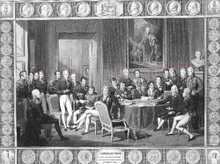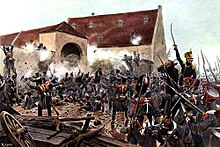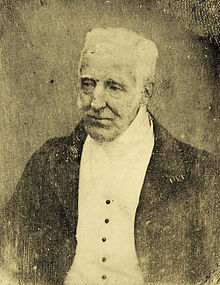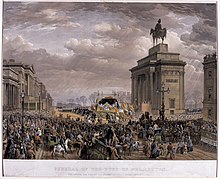Wellesley, Arthur 1. Duke of Wellington
Back

Image source
Wikimedia
https://en.wikipedia.org/wiki/File:Sir_Arthur_Wellesley,_1st_Duke_of_Wellington.jpg
Basic data
-
May 1, 1769 in Dublin
-
†September 14, 1852 in Walmer Castle bei Deal, Kent
-
Feldmarschall, Politiker
Documents
Biographical information from the WeGA
No biographical data found
Biography not available due to one of the following causes:
- Data will be added at a later stage
- Research of the WeGA was without success so far
- It is a well known person where enough information is available online elsewhere, see e.g Wikipedia





![Arthur Wellesley (mounted) at the Battle of Assaye (engraving after William Heath). Wellesley later remarked that it was his greatest victory.[85] (Source: Wikimedia) Arthur Wellesley (mounted) at the Battle of Assaye (engraving after William Heath). Wellesley later remarked that it was his greatest victory.[85] (Source: Wikimedia)](https://upload.wikimedia.org/wikipedia/commons/thumb/a/ae/Battle_of_Assaye.jpeg/250px-Battle_of_Assaye.jpeg)







![The Grenadiers à Cheval. Napoleon can be seen in the background on a grey horse. A number of different mounts could have been ridden by Napoleon at Waterloo: Ali, Crebère, Désirée, Jaffa, Marie, and Tauris.[160] (Source: Wikimedia) The Grenadiers à Cheval. Napoleon can be seen in the background on a grey horse. A number of different mounts could have been ridden by Napoleon at Waterloo: Ali, Crebère, Désirée, Jaffa, Marie, and Tauris.[160] (Source: Wikimedia)](https://upload.wikimedia.org/wikipedia/en/thumb/c/c1/Waterloo-French_cavalry.jpg/250px-Waterloo-French_cavalry.jpg)



















